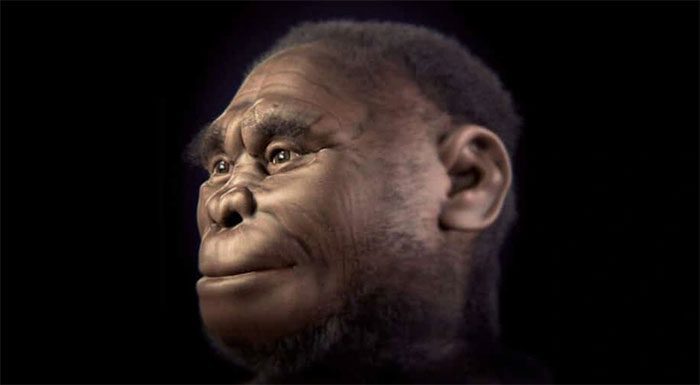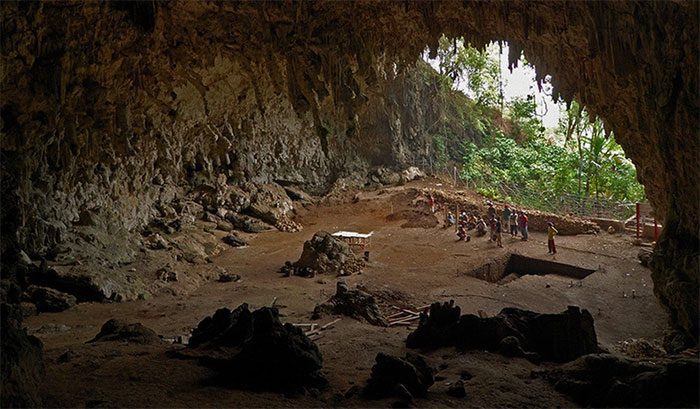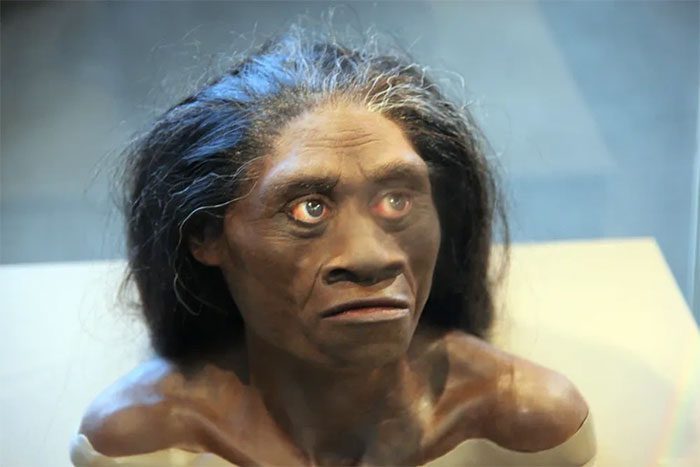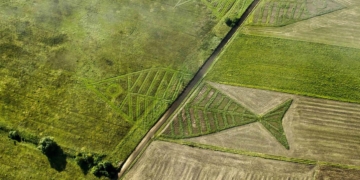The residents of Flores Island (Indonesia) are said to have sighted individuals of the Hominids species, leading to speculation that they may still exist today.
Homo floresiensis is characterized by a height of approximately 1 to 1.1 meters, and individuals of this species are sometimes referred to as “Hobbits.”

Homo floresiensis, also known as Men of Flores, belongs to the Hominids family in the genus Homo and lived about 18,000 years ago on Flores Island (Indonesia).
The fossils of Homo floresiensis date back to the Pleistocene Epoch and were discovered and excavated by an Australian team led by the late archaeologist Mike Morwood in 2003 at Liang Bua cave on Flores Island.
By dating the bones, the results indicated that this species went extinct shortly after competing for resources with Homo sapiens.
Based on accounts of “human-like” creatures reported by the Lio people on Flores Island, ethnologist Gregory Forth believes that members of the Hominids species may still exist today.
In a forthcoming book titled Between Ape and Human, Gregory Forth writes: “My goal in writing this book is to find the most reasonable explanation for the Lio people’s accounts of human-like beings.”
Creatures Entering Mythology
The small “Hobbits,” resembling Australopithecines or chimpanzees, possess features that align with sightings reported by the Lio people.
Gregory Forth has spoken with over thirty witnesses who claim to have seen individuals of the Hominids species before concluding that this species may have survived on Flores Island until today or at least until less than a century ago.

Excavation site of Hominids fossils in a cave on Flores Island, Indonesia (Photo: Didac TIC).
A previous book titled “The Image of the Wild Man in Southeast Asia: An Anthropological Perspective,” published in 2012, mentioned Ebu Gogo, a group of human-like creatures that are part of the folklore on Flores Island.
The author argued that these mythical beings may have been inspired by real encounters between modern humans and Hobbits.
The author points out that the folklore of the Lio people includes humans who can transform into other animals “by adapting to new environments and adopting new ways of life.”
This closely resembles the illustration of Lamarckism—a theory of evolution proposed by the French naturalist Jean-Baptiste de Lamarck in 1809, which posits that changes in the environment lead to changes in needs, habits, and physical traits.
Based on his field research, anthropologist Forth believes that this myth may suggest a connection between modern humans and the ancestors of Hobbits. For the Lio people, these “human-like apes” belong more to the animal kingdom than to humanity.
Indigenous Narratives Illuminate Human Evolution
The Lio people are an illiterate ethnic group without access to modern technology, and they distinguish humans from animals differently than we do.
Thus, for the Lio, the appearance of “ape-like beings” is something that does not entirely resemble modern humans, making individuals of the Homo floresiensis species seem unusual to them.

Reconstruction of what Hobbits looked like in their daily life. (Photo: The Conversation).
The existence of Hobbits has raised many questions among experts, particularly because this species appeared relatively late in the geological record and is believed to have coexisted with modern humans.
Anthropologist Forth noted that Mike Morwood argued for the inclusion of Hobbits in the Hominids group simply because their existence is relatively recent, based on fossil evidence.
After reviewing the accounts of the Lio people, Gregory Forth stated that he found no valid reason to think they were merely imaginary.





















































